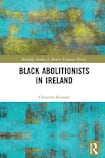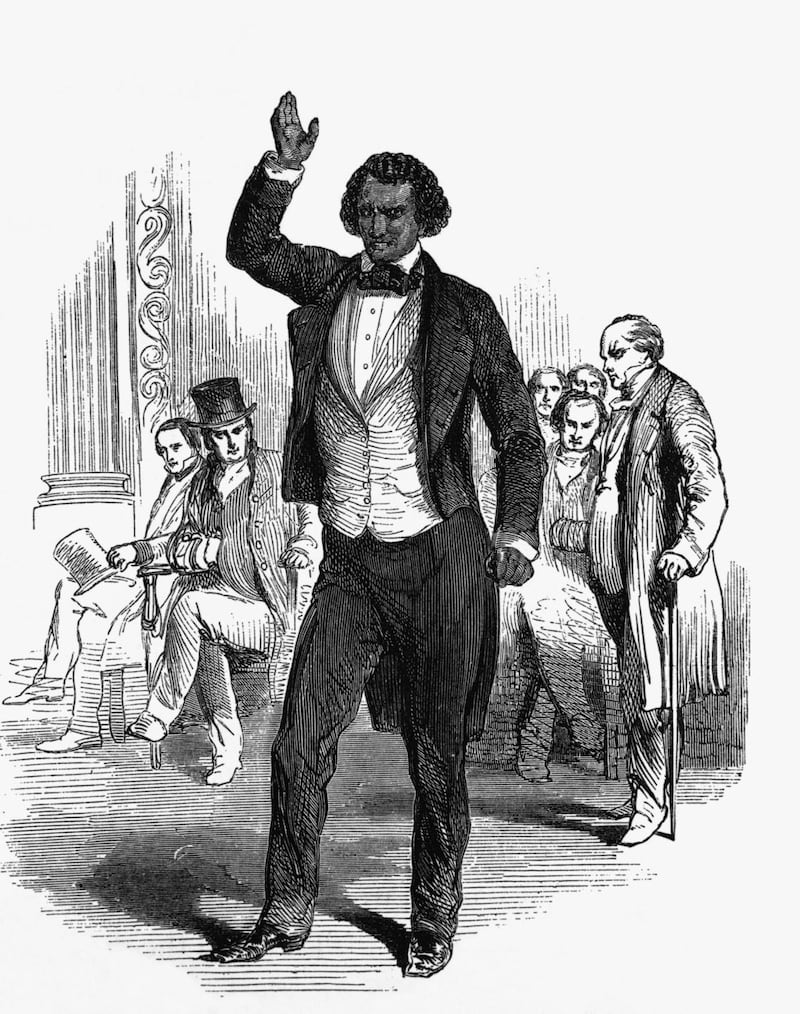
Ireland’s troubled history, Daniel O’Connell once said, “may be traced like the track of a wounded man through a crowd”. How much “more true” was this, the abolitionist Frederick Douglass asked, of black Americans? “Their history is nothing but blood! blood! – blood in the morning, blood at noon, blood at night..
Recent police killings in Minneapolis, Louisville, and Atlanta have shown that racist violence still blights the African-American experience, that it is still necessary to declare that Black Lives Matter. From the United States’ foundation to its civil war, many black activists against enslavement visited Ireland to follow O’Connell’s invocation to “agitate, agitate, agitate”. Christine Kinealy, who has previously chronicled Douglass’s time in Ireland, meticulously traces the travels of 10 such visitors, revealing that they inspired audiences from Belfast to Cork, Dublin to Limerick.
From the earliest days of activism in the “Black Atlantic”, Irish radicals had been a source of inspiration. The bestselling abolitionist writer Olaudah Equiano was hosted by members of the United Irishmen in Belfast in 1791, while Douglass drew strength from Richard Brinsley Sheridan’s “powerful vindication of human rights”. O’Connell become a leader of the global anti-slavery movement and it lifted “the feelings of slaves”, Henry Highland Garnet told an 1851 Dublin audience, when the Liberator’s “mighty voice was heard across the ocean calling upon Irishmen not to disgrace their country by supporting slavery”.
In Ireland itself, black activists found both political support and unexpected respect
This was not least because Irish America was staunchly racist. Samuel Ringgold Ward visited Ireland in 1854-55, and wrote that the Irish “generally became the bitterest of Negro-haters, within fifteen days of their naturalisation – some not waiting so long”. The “hostility of the Irish toward the black”, Ward believed, was “one of the most serious obstacles to the cause of the Negro in America”.
This was why, Douglass told the people of Belfast, Irish abolitionism was so vital: because it would “pain the conscience and anguish the heart of the slaveholder”, to hear that people “in the sacred soil of the Emerald Isle” cared about “the poor persecuted negro”.

The Dublin Quaker Richard Webb was instrumental in bringing black abolitionists to speak in Ireland, and he and O’Connell collaborated on an 1842 petition signed by 70,000 Irish telling Irish-Americans that the United States would never “be a land worthy of your adoption…so long as her soil is polluted by the footprint of a single slave”. “Abolition is a British, not an Irish doctrine”, responded angry Irish-American newspapers, claiming that “there is not in the United States…a single Irish abolitionist”.
In Ireland itself, black activists found both political support and unexpected respect. They encountered little prejudice based on race – a contrast that filled Douglass with “wonder and amazement” – but many took issue with the equation of black enslavement with the “slavery” of poor and oppressed Irish people (today a staple of far-right social media).
The exploitation and hardship faced by the Irish were appalling, Sarah Parker Remond told a Dublin audience, but “were as nothing” compared to “being chattel property of another, to be bought and sold”. “I would ten thousand times rather that my children should be the half-starved paupers of Ireland”, Harriet Jacobs wrote, “than to be the most pampered among the slaves of America”.
There was great popular support in Ireland, however, for abolition, and great interest in visiting black speakers
Irish abolitionists frequently emphasised Ireland’s limited involvement in the slave trade, and Kinealy comments that while in Ireland “some individual towns and merchants may have benefitted from the trade”, this was in stark contrast with Britain.
There should, however, be greater emphasis on Ireland’s place in the Atlantic economy of exploitation. When the British Treasury compensated plantation owners and investors after “emancipation” in 1833, more than 100 Irish merchants and landowners received payouts. Much of Georgian Dublin was built with the proceeds of tobacco, sugar, and cotton, commodities produced by enslaved labour, and Cork’s maritime trade was also involved.
As a French Caribbean official wrote of a trade dispute in 1672, “if the prohibition on Irish [salt] beef continues, it is certain that the Islands couldn’t be struck by a worse catastrophe, because if the slaves are lacking in beef, colonists will be lacking in slaves’.
There was great popular support in Ireland, however, for abolition, and great interest in visiting black speakers. Kinealy’s research in the regional press reveals the breadth of interest in the issue across the country, with newspapers from the Tipperary Vindicator to the Northern Whig devoting regular coverage to both speeches in Ireland and stories of racial injustice in America.
While people were “accustomed in this country to hear lectures on public subjects delivered by men only” (as one Trinity College professor put it), Sarah Parker Remond drew large and admiring crowds in 1859. Frequently addressing the women of Ireland – “when were the women of this country ever backward in the cause of humanity?” she asked – Remond highlighted the plight of enslaved women, “the most deplorably and helplessly wretched of human sufferers”.
Sarah’s brother Charles Lenox Remond had toured Ireland in 1841, and the Nenagh Guardian credited him with “some of the finest bursts of natural, trembling, heart-stirring eloquence it has ever been our lot to witness”. In 1859, with the United States approaching a civil war, Sarah decried “the inert aging despotism” of the South at an address in Waterford.
Hundreds of thousands of Irish-born men fought on both sides of that war, and while the conflict ended slavery, a new system of structural racism rose from its ashes. Faced with conscription and claims that free black people would “take their job and depress their wages”, Irish immigrants “targeted black people in openly racist attacks” during riots in New York and elsewhere.
It is unfortunate that Kinealy’s excellent introduction is not matched with a conclusion or an epilogue that explores the legacy of these visits for both African-American activism and Irish anti-racist and anti-imperial politics. But her important volume demonstrates how the visiting abolitionists “reinvigorated the movement on both sides of the Atlantic”, and how their experiences in Ireland changed how they saw themselves and the world.
“The cause of humanity”, Douglass reflected on leaving Famine-ravaged Ireland in 1846, “is one the world over”.
Dr Christopher Kissane is an Editorial Fellow at History Workshop, and was a co-author of the Royal Historical Society’s 2018 report on race in history.











